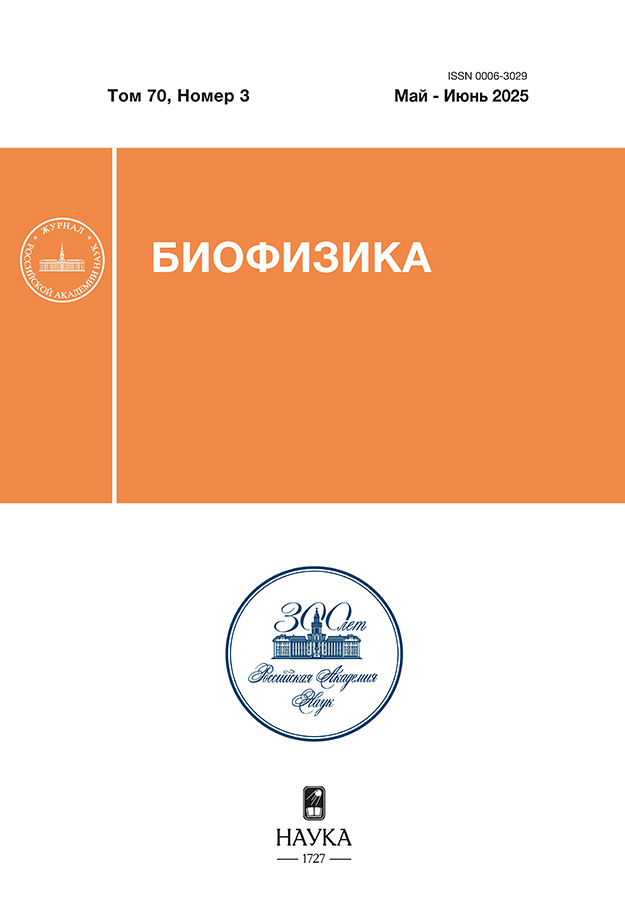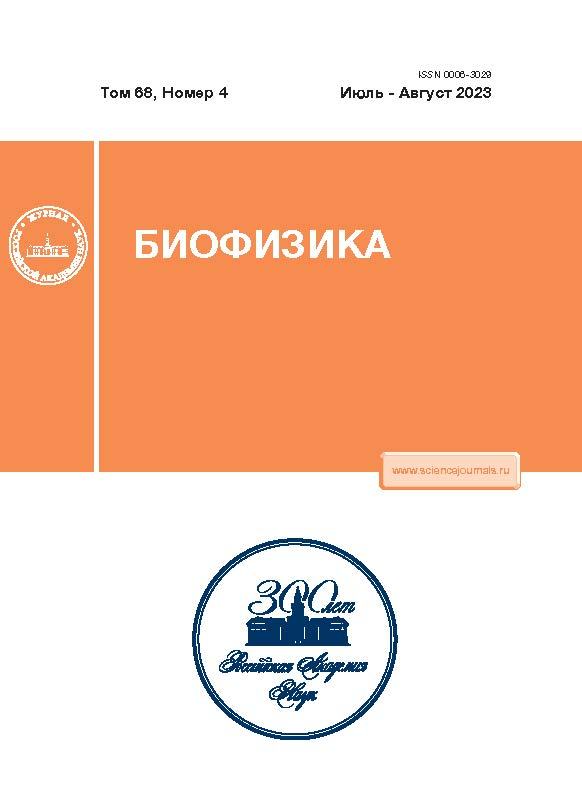Comparative analysis of interchannel interactions on electroencephalograms in healthy people and patients with depression using the method of correlation ratios
- Authors: Sobolev M.E1, Gorelik A.L2,3, Vlasova O.L1
-
Affiliations:
- Peter the Great St. Petersburg Polytechnic University
- V.M. Bekhterev National Medical Research Center for Psychiatry and Neurology
- I.M. Sechenov Institute of Evolutionary Physiology and Biochemistry, Russian Academy of Sciences
- Issue: Vol 68, No 4 (2023)
- Pages: 789-799
- Section: Articles
- URL: https://kld-journal.fedlab.ru/0006-3029/article/view/673444
- DOI: https://doi.org/10.31857/S0006302923040208
- EDN: https://elibrary.ru/KOCXFQ
- ID: 673444
Cite item
Abstract
In the article, based on clinical material obtained in the course of a study of patients with depression, an approach was applied to the analysis of the dependences of electroencephalogram channels using correlation ratios. It can objectively evaluate the properties of connections in any of their models (linear and non-linear). On the basis of the constructed matrices of correlation ratios, the possibility of analyzing paired dependences is shown in order to determination of parameters that differ for the norm and pathology. The direction of the connections between the leads was also established. In our opinion, differences in interhemispheric occipital connections are the most significant. This approach could become the basis for determining unique quantitative markers of depressive states and other neuropsychiatric disorders.
About the authors
M. E Sobolev
Peter the Great St. Petersburg Polytechnic University
Email: m.e.sobolev@mail.ru
Saint-Petersburg, Russia
A. L Gorelik
V.M. Bekhterev National Medical Research Center for Psychiatry and Neurology;I.M. Sechenov Institute of Evolutionary Physiology and Biochemistry, Russian Academy of SciencesSaint-Petersburg, Russia
O. L Vlasova
Peter the Great St. Petersburg Polytechnic UniversitySaint-Petersburg, Russia
References
- Ю. Д. Давыдова, Р. Ф. Еникеева, А. В. Казанцева и др., Вавиловский журн. генетики и селекции, 23 (4), 465 (2019).
- МКБ-10, международная классификация болезней 10 пересмотра [Электронный ресурс]. Режим доступа: https://mkb-10.com/index.php?pid=4211 (05.12.22).
- А. Б. Смулевич, Депрессии при психических и соматических заболеваниях (Медицинское информационное агентство, М., 2015).
- T. Hajek, J. Kozeny, M. Kopecek, et al., J. Psychiatry Neurosci., 33, 91 (2008).
- P. C. Koolschijn, N. E. van Haren, G. J. Lensvelt-Mulders, et al., Hum. Brain Mapp., 30 (11), 3719 (2009).
- M. Naughton, T. G. Dinan, and L. V. Scott, Handbook Clin. Neurol., 124, 69 (2014).
- Y. Noda, M. Nakamura, T. Saeki, et al., Neurosci. Res., 77 (1-2), 70 (2013).
- J. P. Hamilton, M. C. Chen, and I. H. Gotlib, Neurobiol. Dis., 52, 4 (2013).
- R. Ramasubbu, et al., Front. Psychiatry, 5, 17 (2014).
- S. Tang, et al., Depress. Anxiety, 36, 712 (2019).
- M. A. Ferdek, C. M. van Rijn, and M. Wyczesany, Cogn. Affect. Behav. Neurosci., 16, 1099 (2016).
- А. Ф. Изнак, Е. В. Изнак и Т. С. Мельникова, Психиатрия, 2, 127 (2018).
- М. Н. Ливанов, Избранные труды. Пространственно-временная организация потенциалов и системная деятельность головного мозга (Наука, М., 1989).
- А. Г. Нарышкин, Т. А. Скоромец, А. Л. Горелик, и др., Журн. неврологии и психиатрии им. С.С. Корсакова, 109 (10), 51 (2009).
- Koufen H, Dichgans J. Frequency and course of post-traumatic EEG-abnormalities and their correlations with clinical symptoms: a systematic follow up study in 344 adults. Fortschr Neurol Psychiat Grenzgeb. 46, 165 (1978).
- А. П. Кулаичев, Н. Л. Горбачевская, А. В. Горюнов и др., Журн. неврологии и психиатрии им. С.С. Корсакова, 112 (12), 55 (2012).
- М. Е. Соболев, А. Л. Горелик и О. Л. Власова, Науч.-техн. ведомости СПбГПУ. Физико-математические науки, 13 (3), 119 (2020).
- MAS.Exponenta.ru [Электронный ресурс]. Режим доступа: http://mas.exponenta.ru/ (29.06.22).
- Р. И. Ивановский и М. А. Новожилов, Математическая биология и биоинформатика, 11 (2), 214 (2016).
- Н. В. Звёздочкина, Исследование электрической активности головного мозга (Изд-во Казан. ун-та, Казань, 2014).
- И. А. Лапин и М. В. Алфимова, Социальная и клиническая психиатрия, 24 (4), 81 (2014).
- А. А. Варламов и В. Б. Стрелец, Журн. высшей нервной деятельности им. И.П. Павлова, 63 (6), 613 (2013).
- Т. С. Мельникова и И. А. Лапин, Социальная и клиническая психиатрия, 28 (3), 27 (2008).
- Е. А. Петрова, Н. А. Георгиевская, И. В. Кичук и др., Журн. неврологии и психиатрии им. С.С. Корсакова, 110 (6), 77 (2010).
- Д. Ю. Бутко, А. Т. Давыдов и др., Рус. мед. журн., 5 (17), 266 (2008).
- K. Wiedemann, Dialogues Clin. Neurosci., 13 (2), 225 (2011).
- A. Demerdzieva and N. Pop-Jordanova, Prilozi., 32 (1), 229 (2011).
- И. В. Кичук, Е. А. Петрова, А. А. Митрофанов и др., Неврология, нейропсихиатрия, психосоматика, 8 (3), 34 (2016).
- M. Matousek, Int. J. Psychophysiol., 10 (3), 239 (1991).
- А. Ф. Изнак и М. Б. Никишова, Физиология человека, 33 (2), 137 (2007).
- R. J. Davidson, Cognition & Emotion, 12 (3), 307 (1998).
- M. R. Ford, J. W. Goethe, and D. K. Dekker, Biol. Psychiatry, 21 (12), 1175 (1986).
- V. Knott, C. Mahoney, S. Kennedy, and K. Evans, Psychiatry Res., 106 (2), 123 (2001).
- H. Hinrikus, A. Suhhova, M. Bachmann, et al., Med. Biol. Eng.Comput., 47 (12), 1291 (2009).
- T. Takeda, J. Juzen Med. Society, 114 (4), 62 (2005).
- A. Damborska, E. Honzirkova, R. Bartecek, et al., Sci. Rep., 10, 4398 (2020).
- L. Pessoa and R. Adolphs, Nat. Rev. Neurosci., 11, 773 (2010).
- B. T. Thomas, et al., J. Neurophysiol., 106, 1125 (2011).
- S. Markovska-Simoska, N. Pop-Jordanova, and J. Pop-Jordanov, Prilozi (Makedon. Akad. Nauk Umet. Odd. Med. Nauki), 39 (2-3), 5 (2018).
- R. Armitage, R. F. Hoffmann, and A. J.Rush, Psychol. Med., 29 (6), 1435 (1999).
Supplementary files











